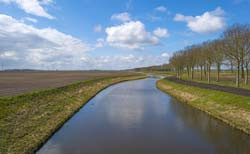Restoring Europe's waterways
Rehabilitation of polluted freshwater (surface water & groundwater) systems is of utmost importance in the face of increasing population density. Current approaches focus either on removing the source of pollution or preventing polluted groundwater from reaching dams and lakes. There is a need, however, for an overall management approach to ensure that the water system is rehabilitated as a whole. The AQUAREHAB project aimed to do this through a two-pronged approach. The first part of the project developed new technologies for cleaning priority contaminants and tested these technologies at local scale aiming at linking this with river basin management. The second part used the data gathered during case studies to create broadly useful tools for rehabilitation of water systems. AQUAREHAB research identified nitrates, pesticides, chlorinated compounds, aromatic compounds, and mixtures of these as priority contaminants of freshwater systems. Project partners investigated a number of innovative technologies to block, degrade or remove these pollutants. Scientists tested the most promising of these technologies in three case study areas: Denmark (mostly agricultural run-off), Israel (industrial) and Belgium (urban groundwater). From these case studies, two management tools were developed. REACHER is a tool for evaluating the effects of a given technology on a body of water, while REACHER-local provides the same service for groundwater. Both tools are freely available on the project website. AQUAREHAB research has provided tools and technologies to help manage and decontaminate polluted water systems regardless of the type of pollution. Policy recommendation towards an integrated management of groundwater and surface water were formulated.
Keywords
Freshwater systems, contaminants, river basin management, rehabilitation, pollutants



